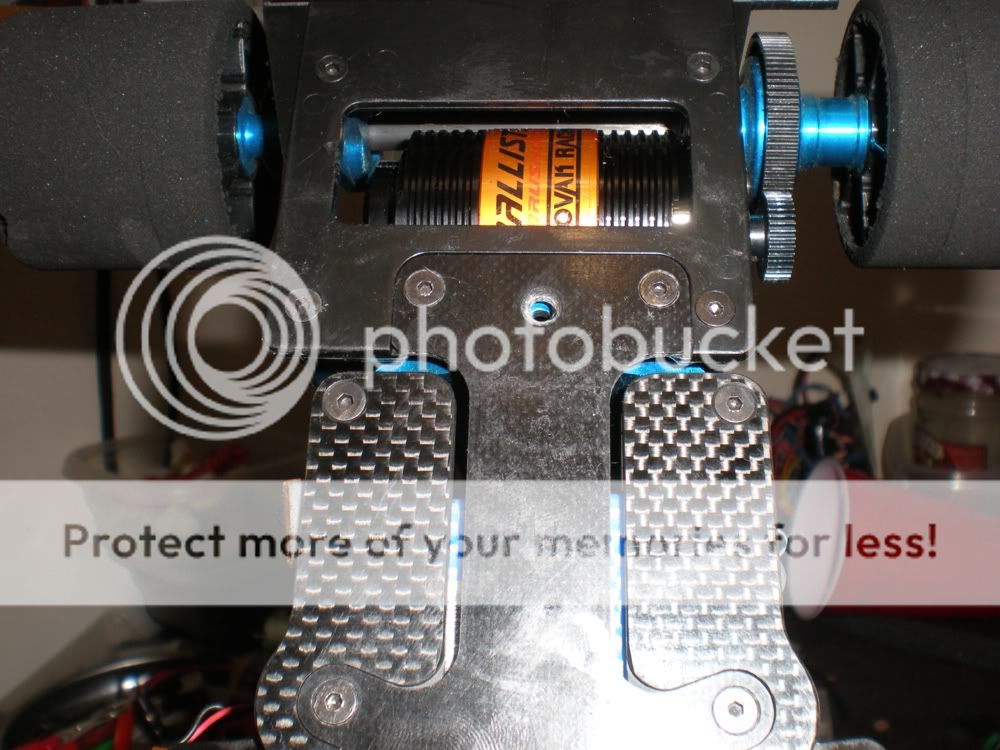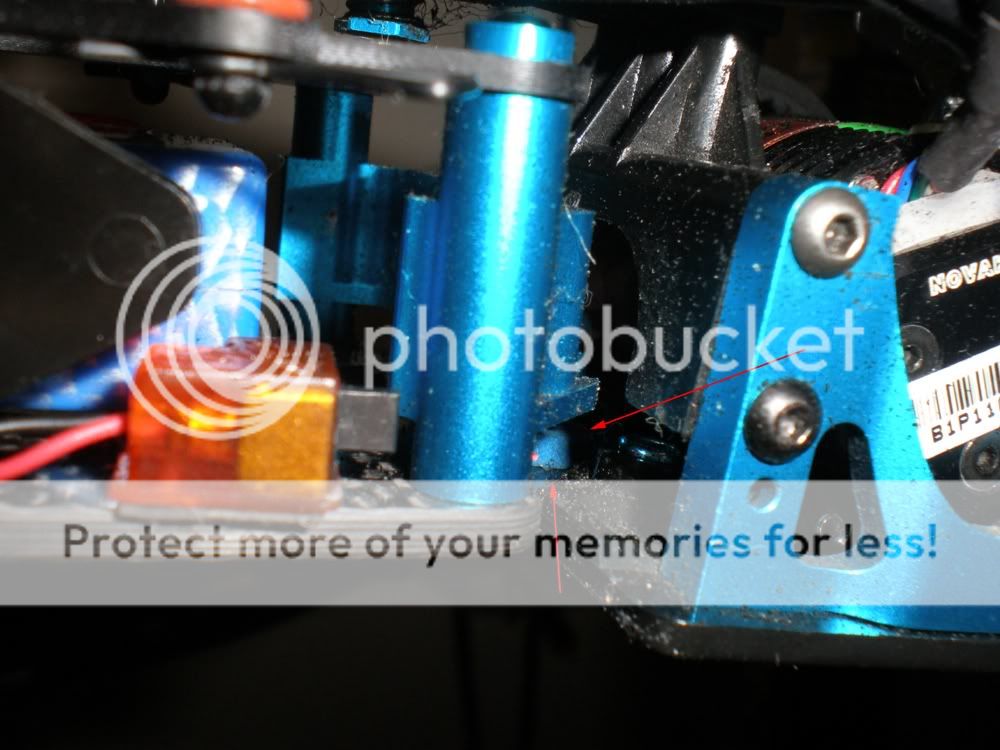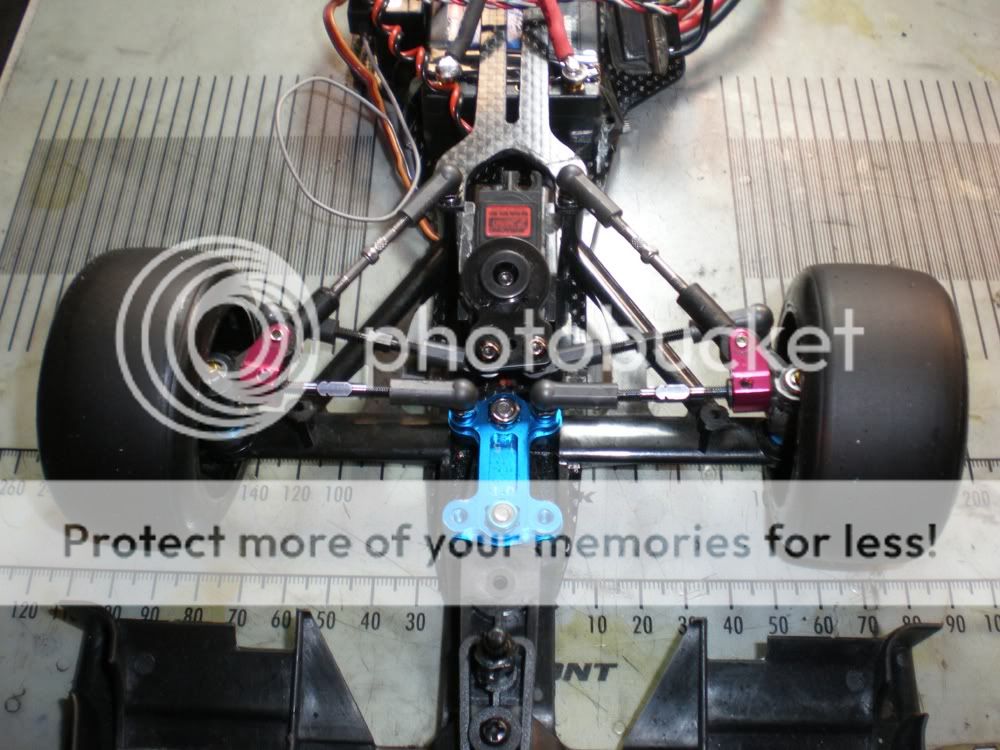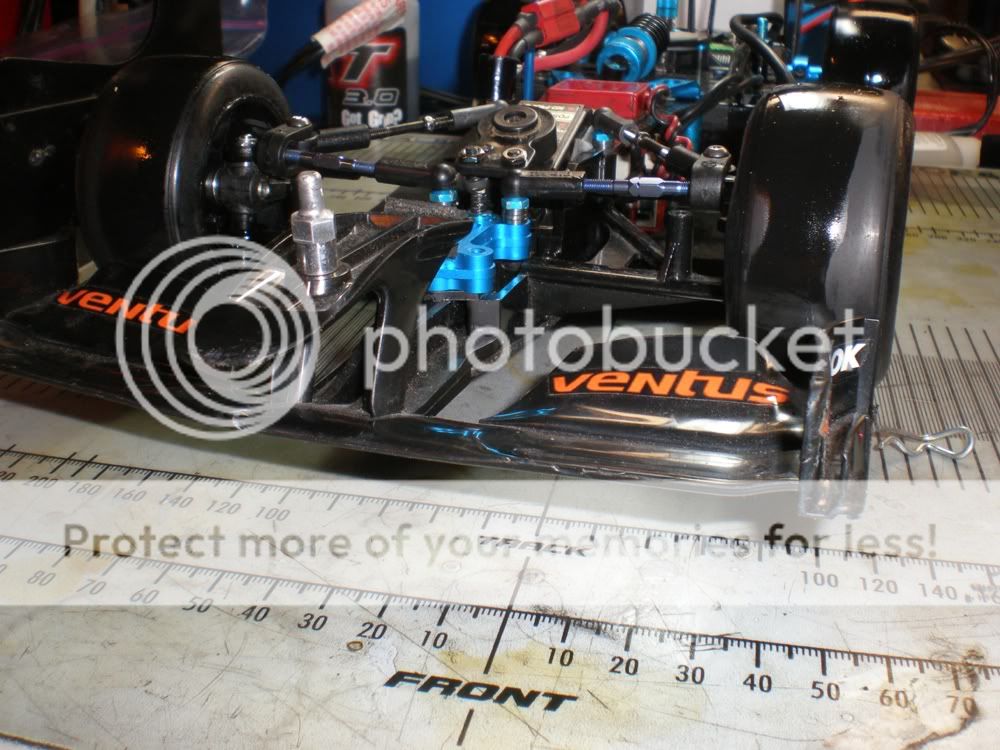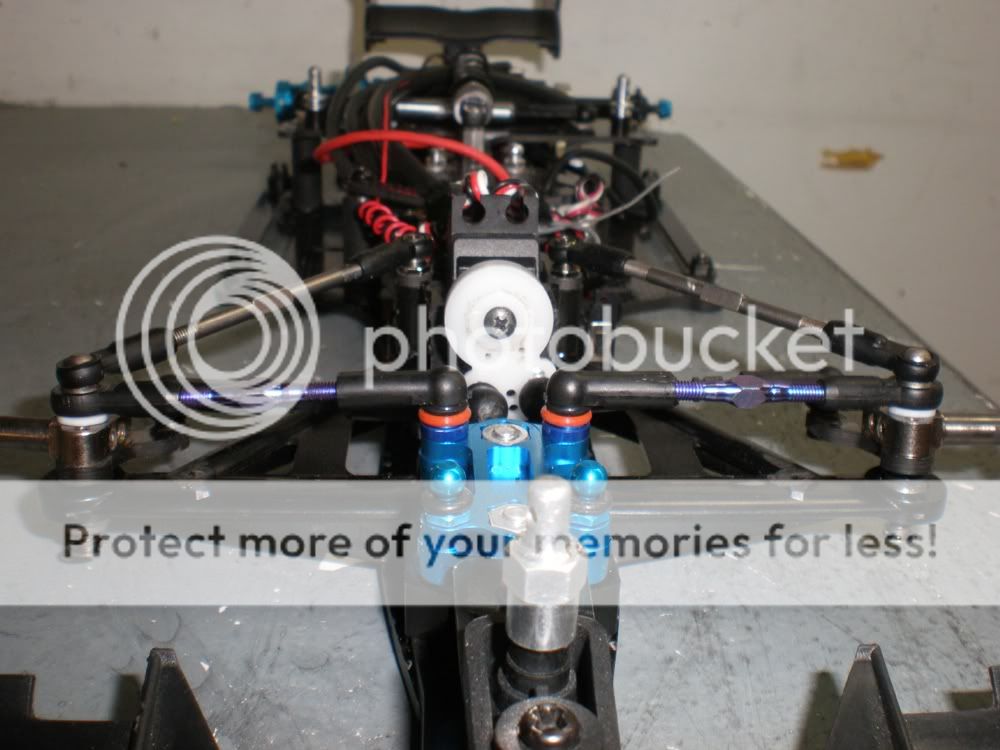So the Tamiya Championship Series for North America has announced their rules. Finally, F1 will allow 21.5/no timing esc in the class, which is a huge step. I realize there are a fair amount of racers who are fans of the 540J, but I hate those motors. Formula one should definitely be embracing brushless technology. While it is as good as class as any to get started in, it's still a challenge for the advanced racer.
I am certainly not a silver can guru by any stretch of the imagination, but I put enough time into it to get decent motors. It's pretty much time I could have used doing something more useful, instead of dynoing overhyped drill motors and interviewing old time 1/12 racers to find out what they where doing in 1982 to Igarashi closed endbell motors.
You could dyno up the brushless motors as the oval racers do, but it's not going to produce the same gains they may see. .05 sec per lap is real when you are doing 3 second laps, but on a 10 turn race track, you have ten opportunities to fritter away a pretty small advantage. Most of the time you'd be better off making your car work better. In the unlimited silver can days, the massive advantage you could gain is worth the work, but the return is not there in brushless trying to hunt down the perfect stator/rotor combination, in terms of raw numbers. The manufacturing tolerances are not as bad a brush motors, from what I can tell.
Looking at what I have seen in 17.5 and 21.5 no timing sedan racing, the vast majority of the speed is in the amount of timing that can be put into the motor. The newer motors like Thunder Power, SpeedPassion MMM, Trinity D3 and Revtech all allow up to and even north of 50* of timing. Most other parts of the motor have been specified, so timing is where the bulk of the advantage is gained. I came to believe this due to a race I had with 21.5 "Gt" style touring cars. One racer showed up with the new Thunder Power motor, which was indeed very fast. I had a Novak Ballistic in my car, and I had a hard time keeping up on the straights especially. The secret of the Ballistic motor is that there is no mechanical stop in the endbells timing ring. Novak provides a sticker on the motor to show the timing range up to 45*, but nothing stop you from going past. So i just thought, "What would happen if I went past the sticker?", as I had no other reason to think the TP motor was faster except advanced timing. Sure enough, exceeding the timing sticker by about 2-3mm produced the desired speed with no discernible ill effects.
The bigger issue is the allowance of "any rotor" in the rules. There are 2 ways to go in my opinion, if you are thinking of experimenting. One would be a smaller diameter rotor to get more rpm. This will also produce less torque, which may be an advantage in outdoor situations where traction may be at a premium. The other would be a bigger rotor, and advanced timing to bring the rpm back. At an indoor facility, this could be an advantage on high traction. I have seen this combo work in 17.5 sedan, i know it could be feasible.
As far as a starting point for a 21.5, 66-67mm rollout on a small track is a decent start. On a bigger track, 70mm would be appropriate. This is with a lot of timing advance on a Ballistic.
As far as what ultimately, will be the best motor, I don't know. I know there is a perception that the Thunder Power and Trinity/Revtech products are very good, but I have had the above experience with the Novak, and I have also seen some ridiculous Speed Passion motors recently as well (with 40 or 50* sensor boards in them). More than anything, the main factor would be possibilities with the rotors, if it pans out...but until somebody puts the work in, I think that pretty much anything with a boat load of timing will be serviceable.
Monday, December 19, 2011
Saturday, December 17, 2011
Wicked Wide 104
After a few weeks of rubber tire racing, I brought out my foam tire F104 from last winter with a few key modifications. I was being subtly "encouraged" to run foam tire by one of the guys who was running a wide Exotek car on foams, so I thought I would bring my car out with a few things I had been wanting to try out.
I built up a link style front end using a 3Racing lower arm set to start with. You can also use the Tamiya link style lower arm as well, but it is a few millimeters narrower than the 3Racing part. I wanted to go for a wider front end, so 3Racing it was. Luckily, the Tamiya F104 camber plate will fit right on top of either of these arm sets, and it is perfect for the two ballstud locations you will need.
The arrows point to the link locations, The forward link is just a Tamiya ballstud with no spacers. The rear link has 4.5mm of shims to create some active caster effect, and also to create the proper angle as this is the link mainly controlling camber. The front link has more effect on caster, but both links affect each other, and you have to keep an eye on both adjustments as you are setting the front end. 0-.5* camber is a good start, and around 5* caster was good for me. Remember too much caster can make the car want to kind of stop mid corner if your car is soft at the tbar...and this was the case when I first put the car on the track.
Another angle of the front end...you can also see here that I'm using the Tamiya Indy car rims, which are bigger in diameter. They are closer to a 1/10 pan car rim. They are discontinued, but they can be found if you look around. 1/10 donuts work well on the rim, and they also allow the use of the F104 kingpin and ride height spacers. You may be able to see that I used 1.5mm of spacers on top of the arm to keep it fairly level. Moving the spacers under the arm would make the car pick up some camber in roll, and thereby front grip.
Here the center screw has been removed from the t bar for added flex and grip. Basically, this moves the pivot point of the t bar quite a bit forward. This also gives the car more rotation as it can twist a bit more. The kit stock black t bar is stiffer and works better for foam when you take the screw out of the t bar.
The arrows here point to the foam spacer that I put on the t bar. The foam spacer is glued to the top of the t bar to provide a way to keep the ride height and a pivot point.
Since I was using an 1800 mAh micro car pack, I moved the receiver to the middle of the car. I wound up with the esc still on the radio tray, so teh arrow shows where I used 1/2 oz. (14g) of lead to re balance the car. You'll also notice the oversize Indy car rim.
I more or less left the car with the setup I used for the Harbor Hobby TCS, outside of the front end and tires. Amazingly, it was extremely quick right away. I did have to take some caster out, but that was about it. It had a ton of grip and steering. The t bar without the screw is a huge factor, and it is the only way I would run the car outside of TCS rules.
I built up a link style front end using a 3Racing lower arm set to start with. You can also use the Tamiya link style lower arm as well, but it is a few millimeters narrower than the 3Racing part. I wanted to go for a wider front end, so 3Racing it was. Luckily, the Tamiya F104 camber plate will fit right on top of either of these arm sets, and it is perfect for the two ballstud locations you will need.
The arrows point to the link locations, The forward link is just a Tamiya ballstud with no spacers. The rear link has 4.5mm of shims to create some active caster effect, and also to create the proper angle as this is the link mainly controlling camber. The front link has more effect on caster, but both links affect each other, and you have to keep an eye on both adjustments as you are setting the front end. 0-.5* camber is a good start, and around 5* caster was good for me. Remember too much caster can make the car want to kind of stop mid corner if your car is soft at the tbar...and this was the case when I first put the car on the track.
Another angle of the front end...you can also see here that I'm using the Tamiya Indy car rims, which are bigger in diameter. They are closer to a 1/10 pan car rim. They are discontinued, but they can be found if you look around. 1/10 donuts work well on the rim, and they also allow the use of the F104 kingpin and ride height spacers. You may be able to see that I used 1.5mm of spacers on top of the arm to keep it fairly level. Moving the spacers under the arm would make the car pick up some camber in roll, and thereby front grip.
Here the center screw has been removed from the t bar for added flex and grip. Basically, this moves the pivot point of the t bar quite a bit forward. This also gives the car more rotation as it can twist a bit more. The kit stock black t bar is stiffer and works better for foam when you take the screw out of the t bar.
The arrows here point to the foam spacer that I put on the t bar. The foam spacer is glued to the top of the t bar to provide a way to keep the ride height and a pivot point.
Since I was using an 1800 mAh micro car pack, I moved the receiver to the middle of the car. I wound up with the esc still on the radio tray, so teh arrow shows where I used 1/2 oz. (14g) of lead to re balance the car. You'll also notice the oversize Indy car rim.
I more or less left the car with the setup I used for the Harbor Hobby TCS, outside of the front end and tires. Amazingly, it was extremely quick right away. I did have to take some caster out, but that was about it. It had a ton of grip and steering. The t bar without the screw is a huge factor, and it is the only way I would run the car outside of TCS rules.
Thursday, December 8, 2011
Exotek 104 on Pit rubber
This is my Exotek 104 on rubber tires. I have been running a short Losi battery in about the center of the car. Nothing is really atypical, but I have been running gold Associated springs on the links. I have said this before, but it seems like rubber tires like a car stiffer in roll than foam cars. Typical side spring for a foam car would be a CRC red or white, which is maybe like a blue or silver Associated. I have also gone to 70wt oil in the side damper.
In contrast to my "F103.5", I could throw the car into the corner. It does have a bit of a push on turn in. This makes me wonder if the front end setup is what is keeping the car from flipping. A long time ago a good sedan racer told me the car is fastest when it's about to flip off the track. Maybe there is just a tradeoff with rubber tires that some steering has to sacrificed to keep the car on the track. ????
Gold springs..still running 35 wt oil/3 hole and a red florescent mini car spring.
In contrast to my "F103.5", I could throw the car into the corner. It does have a bit of a push on turn in. This makes me wonder if the front end setup is what is keeping the car from flipping. A long time ago a good sedan racer told me the car is fastest when it's about to flip off the track. Maybe there is just a tradeoff with rubber tires that some steering has to sacrificed to keep the car on the track. ????
Gold springs..still running 35 wt oil/3 hole and a red florescent mini car spring.
Wednesday, December 7, 2011
F103.5
The F103 was a great car when "wide" 200mm cars were the most popular. At this point, 180mm cars are making a big push, with the publicity of the class at the IIC, the UF1 series, and Tamiya's many F104 based kits. At the same time, the F103 has some upside that other cars don't. It is a bit shorter, which is an advantage on the tight indoor carpet tracks raced in the winter. All the Tamiya front ends interchange, so it's a pretty simple operation to bolt an F104 front end and the proper tires on and get to work. The two biggest obstacles are the body fitment and battery selection. The battery turns out to be easy to take care of - a Losi 22 "shorty" pack fits perfectly with an F104 body. To get the body to fit, a few things must be modified. First off the rear of the body must be shortened due to the wheelbase of the car. Secondly, the top deck must be cut down and the holes for the body posts re drilled so that the body will fit over the car without being stretched by the upper deck.
You can see in the picture that the rear of the upper deck is cut down and the posts moved in. Also note the width of the short pack.
Body fitted, stock holes for posts in body line up perfectly.
This is again an F104 lower arm, with the camber plate directly on top of the arm. Xpress parts are used to control the caster, and as the upper eyelet on the kingpin. 35mm turnbuckles for all links are a good size if you want to set up a front end like this. Everything else is from a 104 front end. Generally, 1* camber or less and 6* caster are a good place to start, with black springs. Ride height should be at the minimum legal.
Another look at the front end.
I should point out that I like to try to control the roll of the car at the t bar. Rubber tires are heavy, and i think that they require a bit more roll stiffness. To that end, I have been using the standard t bar, with a .5mm metal shim on the forward screw, and an .060" nylon washer at the rear, with the large outer o ring from an F104 t bar around the washer. I was trying to limit the movement of the T bar without making it solid or too stiff. The car's short length makes it prone to traction roll at times, from the small amount of running i have done with it. Taking a stab at things, I did try both OFNA Diff Lock and 100,000wt diff oil on the damper plates. The OFNA lube, which is like glue, made the car do some strange things, like pirouettes... Anyway, 100,000 wt may have been better, but I cut a tire sidewall and the car was looping out randomly. I'm not sure how to handle the t bar setup with this car yet. I may just throw everything out the window and run the car soft with minimal caster. Caster is a problem if you run too much in a high traction situation, since it cross weights the car and induces even more roll. So as the car wants to traction roll, you have to take caster out.
The first night i ran the car, it was actually pretty good, and the week I had to think about it may have just resulted in some over thinking. It probably just needs a solid practice day to get an idea of what it likes and it will be very good.
You can see in the picture that the rear of the upper deck is cut down and the posts moved in. Also note the width of the short pack.
Body fitted, stock holes for posts in body line up perfectly.
This is again an F104 lower arm, with the camber plate directly on top of the arm. Xpress parts are used to control the caster, and as the upper eyelet on the kingpin. 35mm turnbuckles for all links are a good size if you want to set up a front end like this. Everything else is from a 104 front end. Generally, 1* camber or less and 6* caster are a good place to start, with black springs. Ride height should be at the minimum legal.
Another look at the front end.
I should point out that I like to try to control the roll of the car at the t bar. Rubber tires are heavy, and i think that they require a bit more roll stiffness. To that end, I have been using the standard t bar, with a .5mm metal shim on the forward screw, and an .060" nylon washer at the rear, with the large outer o ring from an F104 t bar around the washer. I was trying to limit the movement of the T bar without making it solid or too stiff. The car's short length makes it prone to traction roll at times, from the small amount of running i have done with it. Taking a stab at things, I did try both OFNA Diff Lock and 100,000wt diff oil on the damper plates. The OFNA lube, which is like glue, made the car do some strange things, like pirouettes... Anyway, 100,000 wt may have been better, but I cut a tire sidewall and the car was looping out randomly. I'm not sure how to handle the t bar setup with this car yet. I may just throw everything out the window and run the car soft with minimal caster. Caster is a problem if you run too much in a high traction situation, since it cross weights the car and induces even more roll. So as the car wants to traction roll, you have to take caster out.
The first night i ran the car, it was actually pretty good, and the week I had to think about it may have just resulted in some over thinking. It probably just needs a solid practice day to get an idea of what it likes and it will be very good.
Randy Willard's TRG continuing developments..
I had a chance to work with Randy's TRG car in the 180 mm format with rubber tires. Randy asked me to look at what we could do to get the car a little better. It was ok, but it needed some TLC so we could get it fast for carpet.
First I changed the front end links to be closer to the F104 front end i have been working with lately. I had originally helped get the front end setup for the modern narrow style, but the 4 links all connected to the camber plate. I find that the front end is easier to set up with the caster link extending back to the servo mount. This makes the camber and caster links affect each other less as you adjust the front end. Otherwise, each setting keeps changing as you adjust the other.
A side view of the link setup. There is a fair amount of caster in the car. Note that as you add caster and camber, it will create steering, and traction roll issues, too.
Originally, Randy had the long, green fiberglass link on the car. This was very soft, but great for outdoor racing. After we tried the shorter, and slightly stiffer green fiberglass link, the even stiffer black side link was settled on. The shorter links don't allow as much articulation, as well as being stiffer. I eliminated the o rings from the setup as well, substituting plastic washers of a similar size to remove even more compliance. Rubber tires are heavier and seem to want a stiffer side to side suspension. The links are cranked down for maximum stiffness. This also limits the travel, which I think helps keep traction rolling to a minimum.
Initially, I did have some traction rolling. Reducing camber to under 1* and reducing caster brought the car to a very drivable state. Caster is probably 6-7*, but I didn't happen to measure it before I gave the car back to Randy. The camber plate is also set to the "1.0" position, so the overall link length is short, which helps to get some roll out of the front end of the car. The shock has 45 wt Losi oil. I'm not sure if it is the shock's smaller diameter, but it felt better with a slightly higher weight oil than I usually run (35wt). Randy had loaded the TRG damper with a heavy lube, not sure what it was, but I just checked it and made sure the grooves iun the damper were filled and it seemed spot on. The grease felt about the consistency of diff ball lube, and the car felt good, so I left it.
First I changed the front end links to be closer to the F104 front end i have been working with lately. I had originally helped get the front end setup for the modern narrow style, but the 4 links all connected to the camber plate. I find that the front end is easier to set up with the caster link extending back to the servo mount. This makes the camber and caster links affect each other less as you adjust the front end. Otherwise, each setting keeps changing as you adjust the other.
A side view of the link setup. There is a fair amount of caster in the car. Note that as you add caster and camber, it will create steering, and traction roll issues, too.
Originally, Randy had the long, green fiberglass link on the car. This was very soft, but great for outdoor racing. After we tried the shorter, and slightly stiffer green fiberglass link, the even stiffer black side link was settled on. The shorter links don't allow as much articulation, as well as being stiffer. I eliminated the o rings from the setup as well, substituting plastic washers of a similar size to remove even more compliance. Rubber tires are heavier and seem to want a stiffer side to side suspension. The links are cranked down for maximum stiffness. This also limits the travel, which I think helps keep traction rolling to a minimum.
Initially, I did have some traction rolling. Reducing camber to under 1* and reducing caster brought the car to a very drivable state. Caster is probably 6-7*, but I didn't happen to measure it before I gave the car back to Randy. The camber plate is also set to the "1.0" position, so the overall link length is short, which helps to get some roll out of the front end of the car. The shock has 45 wt Losi oil. I'm not sure if it is the shock's smaller diameter, but it felt better with a slightly higher weight oil than I usually run (35wt). Randy had loaded the TRG damper with a heavy lube, not sure what it was, but I just checked it and made sure the grooves iun the damper were filled and it seemed spot on. The grease felt about the consistency of diff ball lube, and the car felt good, so I left it.
Subscribe to:
Posts (Atom)



